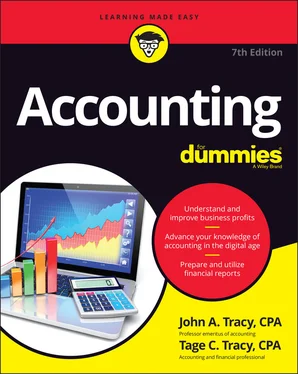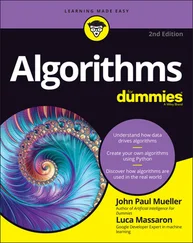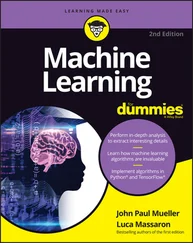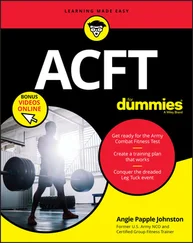John A. Tracy - Accounting For Dummies
Здесь есть возможность читать онлайн «John A. Tracy - Accounting For Dummies» — ознакомительный отрывок электронной книги совершенно бесплатно, а после прочтения отрывка купить полную версию. В некоторых случаях можно слушать аудио, скачать через торрент в формате fb2 и присутствует краткое содержание. Жанр: unrecognised, на английском языке. Описание произведения, (предисловие) а так же отзывы посетителей доступны на портале библиотеки ЛибКат.
- Название:Accounting For Dummies
- Автор:
- Жанр:
- Год:неизвестен
- ISBN:нет данных
- Рейтинг книги:3 / 5. Голосов: 1
-
Избранное:Добавить в избранное
- Отзывы:
-
Ваша оценка:
- 60
- 1
- 2
- 3
- 4
- 5
Accounting For Dummies: краткое содержание, описание и аннотация
Предлагаем к чтению аннотацию, описание, краткое содержание или предисловие (зависит от того, что написал сам автор книги «Accounting For Dummies»). Если вы не нашли необходимую информацию о книге — напишите в комментариях, мы постараемся отыскать её.
Accounting For Dummies
Accounting For Dummies — читать онлайн ознакомительный отрывок
Ниже представлен текст книги, разбитый по страницам. Система сохранения места последней прочитанной страницы, позволяет с удобством читать онлайн бесплатно книгу «Accounting For Dummies», без необходимости каждый раз заново искать на чём Вы остановились. Поставьте закладку, и сможете в любой момент перейти на страницу, на которой закончили чтение.
Интервал:
Закладка:
 Of course, the bottom line of the income statement should be the same amount that could be computed by adding the change in retained earnings and distributions to owners during the year from the profit.
Of course, the bottom line of the income statement should be the same amount that could be computed by adding the change in retained earnings and distributions to owners during the year from the profit.
Reporting cash flows and changes in owners’ equity
Cash is king, as business managers and investors will tell you. More than a quarter of a century ago, the rule-making authority in financial accounting said a business should report a statement of cash flows to supplement the income statement and balance sheet. This financial statement summarizes the business’s cash inflows and outflows during the period.
A highlight of this statement is the cash increase or decrease from profit (or loss) for the period. This key amount in the cash flow statement is called cash flow from operating activities. We explain the statement of cash flows in Chapters 2and 8. Be warned early on that many argue that this cash flow figure is more important than bottom-line profit for the period. Well, we’ll see about that!
 It becomes clear throughout this book that we harp on and emphasize the importance of the statement of cash flows because it offers critical financial information about how a business generates and consumes cash. What we have found over our vast experience is that while most parties (internal and external — both are equally guilty) jump right to the income statement to identify the growth in top-line sales revenue or how much bottom-line profit was generated, or focus on the balance sheet to evaluate the company’s financial strength, the statement of cash flows tends to get passed over relatively quickly. Why? you may ask. It usually comes down to either the party being lazy, having a lack of understanding (as to the purpose of this statement), or believing that the statement of cash flows is overly complex and is not particularly important. All are poor excuses because, in order to truly understand accounting and a company’s financial statements, the statement of cash flows should never be overlooked!
It becomes clear throughout this book that we harp on and emphasize the importance of the statement of cash flows because it offers critical financial information about how a business generates and consumes cash. What we have found over our vast experience is that while most parties (internal and external — both are equally guilty) jump right to the income statement to identify the growth in top-line sales revenue or how much bottom-line profit was generated, or focus on the balance sheet to evaluate the company’s financial strength, the statement of cash flows tends to get passed over relatively quickly. Why? you may ask. It usually comes down to either the party being lazy, having a lack of understanding (as to the purpose of this statement), or believing that the statement of cash flows is overly complex and is not particularly important. All are poor excuses because, in order to truly understand accounting and a company’s financial statements, the statement of cash flows should never be overlooked!
Also, it’s common for many businesses to include a summary of changes in their owners’ equity accounts during the year. Typically it’s called a statement of changes in stockholders’ equity. We could argue that it’s not a full-fledged financial statement, but there’s little point in arguing semantics here — although the other three financial statements (balance sheet, income statement, and cash flows statement) are “full-size” statements. Larger, public corporations are required to present this statement, whereas smaller, private businesses have more leeway in deciding whether to include such a summary. We explain the statement of changes in stockholders’ equity in Chapter 2.
Remembering management’s role
We explain more about the three primary financial statements (balance sheet, income statement, and statement of cash flows) in Chapter 2. They constitute the hard core of a financial report to those persons outside a business who need to stay informed about the business’s financial affairs. These individuals have invested capital in the business, or the business owes them money; therefore, they have a financial interest in how well the business is doing.
To keep informed about what’s going on and the financial position of the business, the managers of a business also use these three key financial statements. These statements are essential in helping managers control the performance of a business, identify problems as they come up, and plan the future course of a business. Managers also need other information that isn’t reported in the three basic financial statements. (In Chapter 13, we explain these additional reports.)
The three primary financial statements constitute a business’s financial center of gravity. The president and chief executive officer of a business (plus other top-level officers) are responsible for seeing that the financial statements are prepared according to applicable financial reporting standards and according to established accounting principles and methods.
 If a business’s financial statements are later discovered to be seriously in error or deliberately misleading, the business and its top executives can be sued for damages suffered by lenders and investors who relied on the financial statements. For this reason, business managers must understand their responsibility for the financial statements and the accounting methods used to prepare the statements. In a court of law, managers can’t plead ignorance.
If a business’s financial statements are later discovered to be seriously in error or deliberately misleading, the business and its top executives can be sued for damages suffered by lenders and investors who relied on the financial statements. For this reason, business managers must understand their responsibility for the financial statements and the accounting methods used to prepare the statements. In a court of law, managers can’t plead ignorance.
We’ve met more than one business manager who doesn’t have a clue about his or her financial statements. This situation is a little scary; a manager who doesn’t understand financial statements is like an airplane pilot who doesn’t understand the instrument readouts in the cockpit. Such a manager could run the business and “land the plane safely,” but knowing how to read the instrument panels along the way is much more prudent.
Business managers at all levels need to understand financial statements and the accounting methods used to prepare them. Also, lenders to a business, investors in a business, business lawyers, government regulators of business, entrepreneurs, anyone thinking of becoming an entrepreneur and starting a business, and, yes, even economists should know the basics of financial statement accounting. We’ve noticed that even experienced business journalists, who ought to know better, sometimes refer to the balance sheet when they’re talking about profit performance. The bottom line is found in the income statement, not the balance sheet!
Accounting as a Form of Art
Throughout this book, you read references to accounting being more of a form of art than an exact science. We are not implying that accountants and the profession of accounting don’t have to follow specific rules, standards, and guidelines; as you see in Chapter 2, a very robust set of rules and authoritative organizations have been established to provide guidance to accountants in plying their trade.
However, it should be noted that accounting is by no means an exact science because accountants are constantly having to use estimates, complete complex financial analyses, and evaluate data (that always seems to be a moving target) when preparing financial information, reports, and statements. Further, economic conditions are constantly changing and evolving at what seems like the speed of light these days (such as with Covid-19’s impact in 2020 and beyond), making the accountant’s job even more challenging. You would be amazed at how even the slightest change in an assumption or data point used, such as increasing the interest rate used to calculate the estimated current value of future obligations, can impact the overall financial results of a business.
To reiterate one of our primary goals, the purpose of the concepts and topics presented in this book is not to provide a detailed overview of technical accounting rules or guidelines, such as the theory behind accounting for capital asset leases or applying Black-Scholes to account for stock option expense, but rather to offer a 10,000-foot overview of accounting and key concepts every business must address, starting with the following fundamental statement.
Читать дальшеИнтервал:
Закладка:
Похожие книги на «Accounting For Dummies»
Представляем Вашему вниманию похожие книги на «Accounting For Dummies» списком для выбора. Мы отобрали схожую по названию и смыслу литературу в надежде предоставить читателям больше вариантов отыскать новые, интересные, ещё непрочитанные произведения.
Обсуждение, отзывы о книге «Accounting For Dummies» и просто собственные мнения читателей. Оставьте ваши комментарии, напишите, что Вы думаете о произведении, его смысле или главных героях. Укажите что конкретно понравилось, а что нет, и почему Вы так считаете.












